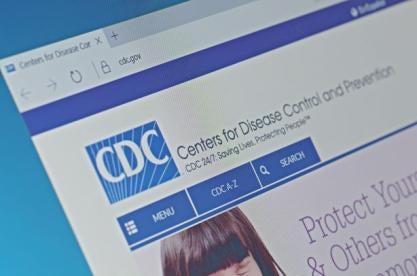As the delta variant (B.1.617.2, which is one of the genetic variants of SARS-CoV-2) fuels a substantial rise in COVID-19 cases in unvaccinated individuals, the U.S. Centers for Disease Control and Prevention (CDC) updated its guidance on masking and a number of other issues on July 27, 2021.
New Mask Guidance
Reversing its May 13, 2021, guidance that fully-vaccinated individuals need not mask in most situations, the CDC now recommends that even fully-vaccinated individuals resume wearing masks indoors in public in areas of high or substantial community transmission. According to CDC data as of July 28, 2021, 46.43 percent of U.S. counties have high community transmission, and 17.02 percent have substantial community transmission. The CDC’s guidance on whether unvaccinated individuals should wear masks indoors in public places remains unchanged: unvaccinated individuals should mask indoors in public, regardless of current community transmission rates.
COVID-19 Testing
The CDC also revised its recommendations regarding whether fully-vaccinated individuals should be tested after COVID-19 exposure. While the CDC previously did not recommend testing for fully-vaccinated individuals after exposure, it now recommends that fully-vaccinated individuals test for COVID-19 between three to five days after exposure, even if asymptomatic. The CDC also recommends that such individuals wear masks indoors in public for either 14 days post-exposure or until receiving a negative test result. If a fully-vaccinated individual tests positive for COVID-19, the CDC recommends that the individual isolate for 10 days after receiving a positive test result.
Schools
The CDC also updated its guidance for schools. While on July 9, 2021, the CDC recommended that only those in schools who are not fully vaccinated wear masks, the July 27, 2021, guidance recommends masks for all individuals in K-12 schools, regardless of vaccination status or level of community transmission. In reaction, some states, including Arizona, Iowa, South Carolina, and Texas, already have taken action to prohibit public schools from requiring masks.
Government Mandates
The CDC guidance comes as a growing number of governments have started mandating or strongly encouraging all individuals, including fully-vaccinated individuals, to wear masks indoors in public. On July 16, 2021, the County of Los Angeles Department of Public Health issued a health order requiring all individuals regardless of vaccination status to wear face coverings in “[a]ll indoor public settings, venues, gatherings, and businesses.” On July 21, 2021, the City of Pasadena health officer issued an order requiring the same. The City of Savannah, Georgia, is mandating that all individuals, regardless of vaccination status, wear facial coverings inside city government facilities, as well as Savannah city schools and early childhood centers. On July 27, 2021, Yolo County, California issued an order requiring masks in indoor public spaces, regardless of vaccination status.
Some counties, including those in the San Francisco Bay Area, are recommending “everyone, regardless of vaccination status, wear masks indoors in public places to ensure easy verification that all unvaccinated people are masked in those settings and as an extra precautionary measure for all.” Some Western Washington counties also are recommending that all individuals wear masks in public indoor spaces. Austin-Travis County’s health authority is recommending that fully-vaccinated individuals again wear masks in any situation in which social distancing cannot occur.
While strongly encouraging or requiring masks for all individuals, state and local governments also are requiring that their own employees be vaccinated. The U.S. Department of Veteran Affairs announced that it would require its frontline health workers to become vaccinated within the next two months, while New York City decided that all municipal workers must be vaccinated by the time schools reopen in September or face weekly testing. California announced a similar measure for all state employees and on-site public and private health care workers.
If these trends continue, more governments may mandate that all individuals wear face coverings indoors and likely will require their own employees be fully vaccinated. These trends also may prompt private employers to mandate vaccinations for employees working on site or traveling, with reasonable accommodations for employees with medical conditions and/or sincerely held religious beliefs, subject to any state law to the contrary.
Key Takeaways
Employers following CDC guidance throughout the pandemic may want to examine their own masking policies, as well as their post-exposure protocols for fully-vaccinated employees. For employee relations reasons, many employers may want to begin communicating with employees that the company is aware of the new guidance and is evaluating potential changes to workplace rules and procedures in each jurisdiction. Employers should also continue to monitor state and local orders. Finally, employers also may elect to establish a consistent masking policy throughout the United States given that keeping up with masking recommendations based on continually-changing community transmission rates may prove difficult for multi-jurisdictional employers.






 i
i


